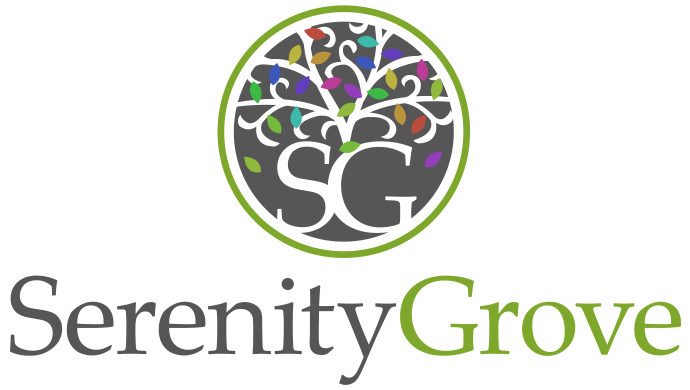Trauma is something everyone experiences to varying degrees. Most of the time, it’s possible to heal from trauma on your own, given enough time. However, sometimes the trauma is so significant that it starts to affect a person’s day-to-day life. When this happens, that person may be dealing with post-traumatic stress disorder, more commonly known as PTSD. This condition does not discriminate, affecting people of all demographics and walks of life. Learning more about the common PTSD signs can help people to identify when a friend or loved one needs help dealing with their trauma.
At Serenity Grove Recovery, we offer a PTSD treatment program in our suite of comprehensive addiction and mental health treatment options. If you or a loved one is struggling to deal with trauma and needs help right away, our experienced staff members are ready to lend their support. Our treatment center offers individualized mental health treatment in Athens, GA, and we are committed to helping members of our community recover from addiction and mental health concerns. Call us today at 844.904.3485 to learn more.
What Is Post-Traumatic Stress Disorder (PTSD)?
PTSD is a mental health condition that is triggered by experiencing or witnessing a terrifying or traumatic event. These events could range from natural disasters, violent assaults, serious accidents, and military combat to personal traumas like abuse. This condition goes beyond typical stress responses, embedding itself into an individual’s life in such a way that the trauma continues to significantly impact their daily life and functioning long after the event has passed.
PTSD can affect anyone, regardless of age, gender, culture, or socioeconomic status. However, certain factors such as genetic makeup, personal history, the intensity and duration of the trauma, and the individual’s support system after the trauma can influence the likelihood of developing this condition.
What Are the Signs of PTSD?
PTSD can manifest in a number of ways, and each individual’s experience is unique.
Re-Experiencing Symptoms
Re-experiencing symptoms are recurrent and intrusive memories of the traumatic event that cause distress in the present. This can manifest in a few different ways:
- Flashbacks: Individuals may experience vivid and intrusive memories of the event. During a flashback, it may feel as though the traumatic event is happening all over again.
- Nightmares: Frequent and disturbing dreams related to the trauma can occur. They can either directly involve the event or have symbols related to the experience.
- Intense emotional or physical reactions: Exposure to reminders or triggers associated with the traumatic event can lead to strong emotional or physical reactions such as sweating, heart palpitations, or panic attacks.
Avoidance Symptoms
Avoidance symptoms involve efforts to avoid distressing trauma-related stimuli. This can involve avoiding thoughts or feelings about the trauma or avoiding external reminders of the event:
- Avoidance of thoughts or feelings: Some individuals may actively try to suppress memories or avoid thinking about the traumatic event. They might avoid talking about it and may distract themselves to avoid dealing with their emotions.
- Avoidance of external reminders: This can involve avoiding people, places, activities, or situations that bring back memories of the traumatic event.
Negative Thoughts and Moods
PTSD can lead to persistent and distorted negative beliefs and expectations about oneself or the world:
- Negative self-image: Individuals might blame themselves for the traumatic event and harbor feelings of guilt, shame, or self-loathing.
- Detachment: There can be a sense of emotional numbness, detachment from loved ones, and a loss of interest in previously enjoyed activities.
- Negative emotions: Persistent feelings of fear, horror, anger, guilt, or shame are common.
Some individuals may also experience being on guard, feeling jumpy, or being easily startled. Because each individual’s experience with trauma is different, these symptoms may vary over time or vary from person to person. The symptoms can be intense enough to disrupt daily activities and relationships.
How Does Treatment Help?
Recovery from PTSD is a journey that involves understanding and managing symptoms, and PTSD treatment programs play a crucial role in this journey. These programs typically include therapies proven effective for PTSD, such as cognitive-behavioral therapy (CBT), eye movement desensitization and reprocessing (EMDR), and medication management.
Comprehensive treatment programs with a multi-faceted approach, such as those offered at Serenity Grove, can provide the necessary resources and tools to help individuals manage their symptoms, regain control of their lives, and navigate their way toward recovery.
Start Your Healing at Serenity Grove Recovery
Recognizing the symptoms of PTSD is the first step, but seeking professional help is the key to managing it. At Serenity Grove, we are committed to helping our clients find a way to heal from trauma, allowing them to live more fulfilling, happier lives. We believe everyone who walks through our doors deserves to be treated with respect and dignity, no matter where they are in life. If you’d like to learn more, you can call us today at 844.904.3485 or fill out our online contact form.


